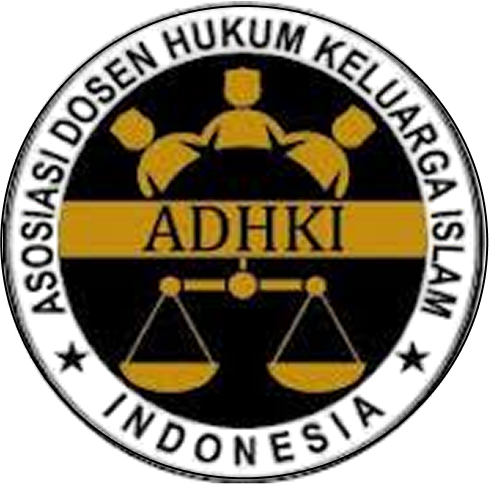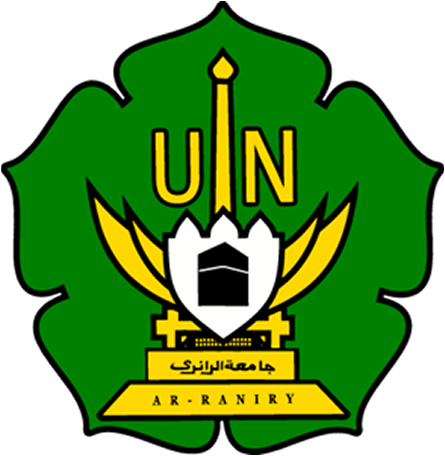The Typology of Hadith as the Bayān of the Qur’an and Its Implications for the Reform of Islamic Inheritance Law
DOI:
https://doi.org/10.22373/sjhk.v7i2.17467Keywords:
Hadith typology, bayān of the Qur’an, inheritance law, Islamic lawAbstract
This paper is a study of the typology of hadith that functions as the bayān (elucidation) of Qur’anic verses and its implications for the reform of Islamic inheritance law. The use of hadith as the bayān of the Qur’an is a common practice of ulema (Muslim scholars) in producing fiqh (Islamic jurisprudence) law. However, certain uses of hadith as the bayān of the Qur’an have also been criticized by scholars. This study is a literature review on hadith viewed as the bayān of the Qur’an, with the primary focus on Islamic inheritance law. Data were collected by means of examining certain hadith used as the bayān of the Qur’an by mufassir (exegete) and fuqaha (Islamic jurists) in carrying out legal istinbath (decision making), especially in cases of inheritance. This study concerns with the studies of the typologies of hadith functioning as the bayān of the Qur’an and their problems that have not been conducted optimally. These studies indicated that certain hadiths used as the bayān of the Qur’an still posed an issue from a methodological point of view. This present study seeks to address three important issues of concern. First, there are three typologies of hadith as the bayān of the Qur’an, namely 1) hadith stated directly by the Prophet as an explanation or a practice of certain verses, 2) hadith stated by the companions of the Prophet as the bayān of a verse, and 3) hadith with no instruction from the Prophet nor indication from the companions as explanations for certain verses, but used as the bayān of certain verses by Islamic jurists. Second, each typology has methodological problems in terms of the context, incompleteness, and hadith occurrence, and the methodological problem has worsened in the last typology. Third, the use of hadith in the third typology as the bayān of the Qur’an in legal istinbath has provided an opportunity for Islamic jurists to renew the Islamic law in the field of inheritance by taking into account the methodological aspect.
References
Journals and Books
Al-Amidi, Ali ibn Muhammad, Al-Ihkam Fi Usul Al-Ahkam. Beirut: Dar al-Kitab al-Arabi, 1404.
Al-Andalusi, Abu Hayyan ibn Yusuf, Al-Bahr Al-Muhith. Beirut: Dar al-Fikr, n.d.
Al-Asy’ats, Abu Daud Sulaiman ibn, Sunan Abī Dāwd. Riyadh: Bait al-Afkar al-Dauliyah, n.d.
Al-Bukhari, Abu Abdullah Muhammad ibn Ismail, Al-Jami’ Al-Sahih Al-Musnad Min Hadithi Rasulillah Sallalhu Alaihi Wassalam Wa Sunanihi Wa Aiyamihi. Al-Qahirah: al-Maktabah al-Salafiyah, 1400.
Al-Khazin, Ala al-Din ibn Muhammad ibn Ibrahim, Lubāb Al-Ta’wīl Fi Ma’āni Al-Tanzīl. Beirut: Dar al-Fikr, 1979.
Al-Namlah, Abd al-Karīm Ali ibn Muhammad, Al-Muhadhdhab Fi Ilm Al-Uṣūl Al-Fiqh Al-Maqāran. Riyāḍ: Maktabah al-Rusyd, 1999.
Al-Qaraḍawi, Yusuf, Kaifa Nata’āmal Ma’a Al-Sunnah Al-Nabawiyah. Al-Qahirah: Dār al-Syurūq, 2002.
Al-Qurthubi, Abu Adillah Muhammad ibn Ahmad, Al-Jāmi’ Li Ahkām Al-Qur’ān. Al-Qahirah: Dar al-Kutub al-Ilmiyah al-Mishriyah, 1964.
Al-Ṣan’ānī, Muhammad Ibn Ismail, Subūl Al-Salām. Al-Qahirah: Maktabah Musthafa al-Babi al-Halabi, 1960.
Al-Sarkhasi, Abu Bakar Ahmad ibn Abi Sahl, Usul Al-Sarkhasi. Beirut: Dar al-Kutub al-Ilmiyah, 1993.
Al-Suyuti, Abd al-Rahman ibn Abi Bakr Jalal al-Din, Al-Itqan Fi ’Ulum Al-Qur’an. Beirut: Dar al-Fikr, 2000.
Al-Sya’rawi, Muhamamd Mutawali, Tafsir Al-Sya’rāwi. Ttp: Muthabi’ Akhbar al-Yaum, 1997.
Al-Syaukani, Muhammad ibn Ali ibn Muhammad ibn Abdillah, Nail Al-Awṭār Min Ahādith Saiyid Al-Akhyār Syarh Muntaqā Al-Akhbār. Misr: Dār al-Hadīth, 1993.
Al-Tabari, Muhammad ibn Jarir, Jāmi’ Al-Bayān Fi Ta’wīl Al-Qur’ān. Beirut: Muassasah al-Risalah, 2000.
Al-Thaiyar, Musa’id Sulaiman, “Mashadir Al-Tafsir: Al-Tafsir Bi Al-Sunnah.” Musa’id bin Sulaiman Nashir al-Thayar. Accessed July 3, 2022. https://attyyar.com/?action=articles_inner&show_id=2208.
Al-Tirmidhi, Muhammad ibn ’Isa ibn Saurah, Sunan Al-Tirmidhi. Riyadh: Maktabah al-Ma’arif li al-Nasyr wa al-Tauzi’, n.d.
Al-Zuhaili, Wahbah, Al-Tafsir Al-Munir Fi Al-Aqidah Wa Al-Syari’ah Wa Al-Manhaj. Damsyiq: Dar al-Fikr al-Mu’ashir, 1418.
Ali, Muhammad and Didik Himmawan, “Peran Hadits Sebagai Sumber Ajaran Agama, Dalil, Dalil Kehujjahan Hadits Dan Fungsi Hadits Terhadap Al-Qur’an,” Risalah, Jurnal Pendidikan Dan Studi Islam 5, No. 1 (2019).
Ansori, Isa, “Tafsir Al-Qur’an Dengan Al-Sunnah,” Kalam 11, No. 2 (2017).
Bisyri, Mohammad Hasan, “Penggunaan Hadis Dalam Tafsir Al-Qur’an Menurut Minardi Mursyid.” Jurnal Penelitian 6, No. 1 (2019).
Fikri, Hamdani Khairul, “Fungsi Hadits Terhadap Al-Qur’an,” Tasamuh 12, No. 2 (2015).
Helmy, Muhammad Irfan, et.al., “The Understanding of Islamic Moderation (Wasatiyyah Al-Islam) and the Hadiths on Inter-Religious Relations in the Javanese Pesantrens,” Indonesian Journal of Islam and Muslim Societies 11, No. 2 (2021). DOI: https://doi.org/10.18326/ijims.v11i2.351-376.
Ismail, M. Syuhudi, Metodologi Penelitian Hadis Nabi, Jakarta: Bulan Bintang, 1992.
Latif, Lazuardi Muhammad and Faisal bin Ahmad Shah, "The Understanding of Wasl Al-Fiqh Bi Al-Hadith at Traditional Dayah Aceh," Al-Ihkam: Jurnal Hukum dan Pranata Sosial 16, No. 1 (2021). https://doi.org/10.19105/al-lhkam.v16i1.3911.
M. Jakfar, Tarmizi and Arifah Fitria, “Understanding Multiple Interpretation on the Hadith that Husbands Allow Wives to Have Outdoor Activies: A Study of Islamic Law Prespectives,” Samarah: Jurnal Hukum Keluarga Islam dan Hukum Islam 5, No. 1 (2021). DOI: http://dx.doi.org/10.22373/sjhk.v5i1.9106.
Maizuddin, “Kualitas Dan Karakteristik Hadis-Hadis Bayān Tafsir Al-Qur’an Dalam Fikih Kewarisan.” Substantia 17, No. 2, (2015). DOI: http://dx.doi.org/10.22373/substantia.v17i2.3989.
Muslim, Imam, Ṣaḥīh Muslim. Beirut: Dar al-Kutub al-Ilmiyah, 1991.
Qudsy, Saifuddin Zuhri and Mamat S. Burhanuddin, “Penggunaan Hadis-Hadis Poligami Dalam Tafsir Ibnu Katsir,” Musâwa 15, No. 2 (2016). DOI:10.14421/musawa.v15i2.1304.
Romli, Muhammad Tajuddin, “Eksistensi Sunnah Dalam Penafsiran,” Al-Ifkar: Jurnal Pengembangan Ilmu Keislaman 15, No. 1 (2021).
Rosyanti, Imas, “Penggunaan Hadis Dalam Tafsir Al-Maraghi.” Diroyah: Jurnal Ilmu Hadis 2, No. 2 (2018). DOI: https://doi.org/10.15575/diroyah.v2i2.2502.
Rusyd, Ibnu, Bidayat Al-Mujtahid Wa Nihayat Al-Muqtashid. Dar al-Ma’rifah, 1982.
Saeed, Abdullah, Al-Quran Abad 21 Tafsir Kontekstual. Bandung: Mizan, 2016.
Sālim, Aṭiyah ibn Muhammad, Syarh Bulūgh Al-Marrām, n.d.
Saparullah, Ary, “Urgensi Kedudukan Hadist Terhadap Al-Qur’an: Bayān Al-Ta’kid, Bayān Al-Tafsir, Dan Bayān Al-Tasyri’,” Jurnal Tana Mana 2, No. 1 (2021).
Suryadilaga, Muhammad Alfatih, “Hadis Dan Perannya Dalam Tafsir Kontekstual Perspektif Abdullah Saeed.” Mutawâtir: Jurnal Keilmuan Tafsir Hadis 5, no. 2 (2015). DOI: https://doi.org/10.15642/mutawatir.2015.5.2.235-342.
Syarifuddin, Amir, Hukum Kewarisan Islam. Jakarta: Kencana, 2012.
Wasman, et.al., “A Critical Approach to Prophetic Traditions: Contextual Criticism in Understanding Hadith,” Al-Jami’ah: Journal of Islamic Studies 61, No. 1 (2023).DOI: https://doi.org/10.14421/ajis.2023.611.1-30.
Yusuf, Nasiruddin, "Hadis Sebagai Sumber Hukum Islam (Telaah Terhadap Penetapan Kesahihan Hadis Sebagai Sumber Hukum Menurut Syafi'iy)," Jurnal Ilmiah Al-Syir'ah 13, No. 1 (2015). DOI: http://dx.doi.org/10.30984/as.v13i1.4.
Legal Rules
Supreme Court Decision Number 184K/AG/1995.
Supreme Court Decision Number 327K/AG/1997.
Supreme Court Decision Number 86K/AG/1994.
Aceh Provincial Sharia Court Decision Number: 42/Pdt-G/2008/MSy-Prov.
Bangil Religious Court Decision Number 538/Pdt.G/2004/PA.Bgl.
Sukabumi City Religious Court Decision Number 52.Pdt.G.1999.
Sampang Religious Court Decision Number 415/Pdt. P/2011/PA. Spg.
Surabaya Religious Court Decision Number 1043/Pdt.P/2015/PA.Sby.
Downloads
Published
Issue
Section
License
Authors who publish in Samarah: Jurnal Hukum Keluarga dan Hukum Islam agree to the following terms:
- Authors retain copyright and grant the journal right of first publication with the work simultaneously licensed Attribution-ShareAlike 4.0 International (CC BY-SA 4.0) that allows others to share the work with an acknowledgment of the work's authorship and initial publication in this journal.
- Authors are able to enter into separate, additional contractual arrangements for the non-exclusive distribution of the journal's published version of the work (e.g., post it to an institutional repository or publish it in a book), with an acknowledgment of its initial publication in this journal.
- Authors are permitted and encouraged to post their work online (e.g., in institutional repositories or on their website) prior to and during the submission process, as it can lead to productive exchanges, as well as earlier and greater citation of published work. (See The Effect of Open Acces)









